Key Takeaways:
· Biophilia and natural light enhance productivity: Workspaces with greenery and daylight improve focus, mood, and employee engagement.
· Health-focused design improves well-being: Natural elements in offices reduce stress, support mental health, and promote better sleep.
· Sustainable design drives efficiency: Integrating daylighting and biophilia lowers energy costs, reduces carbon impact, and fosters long-term workplace wellness.
When it comes to designing a workplace that attracts and inspires employees, few design choices are as transformative as biophilia and natural light. This dynamic duo creates an environment that not only elevates mood but also significantly enhances productivity, far outpacing the benefits of popular amenities like ergonomic chairs, standing desks, and cozy coffee nooks. While these comfort-driven features are certainly beneficial, they simply can't compete with the immediate and profound positive impact that greenery and natural light have on the workplace. Embracing these elements is crucial for fostering a vibrant and motivated workforce.
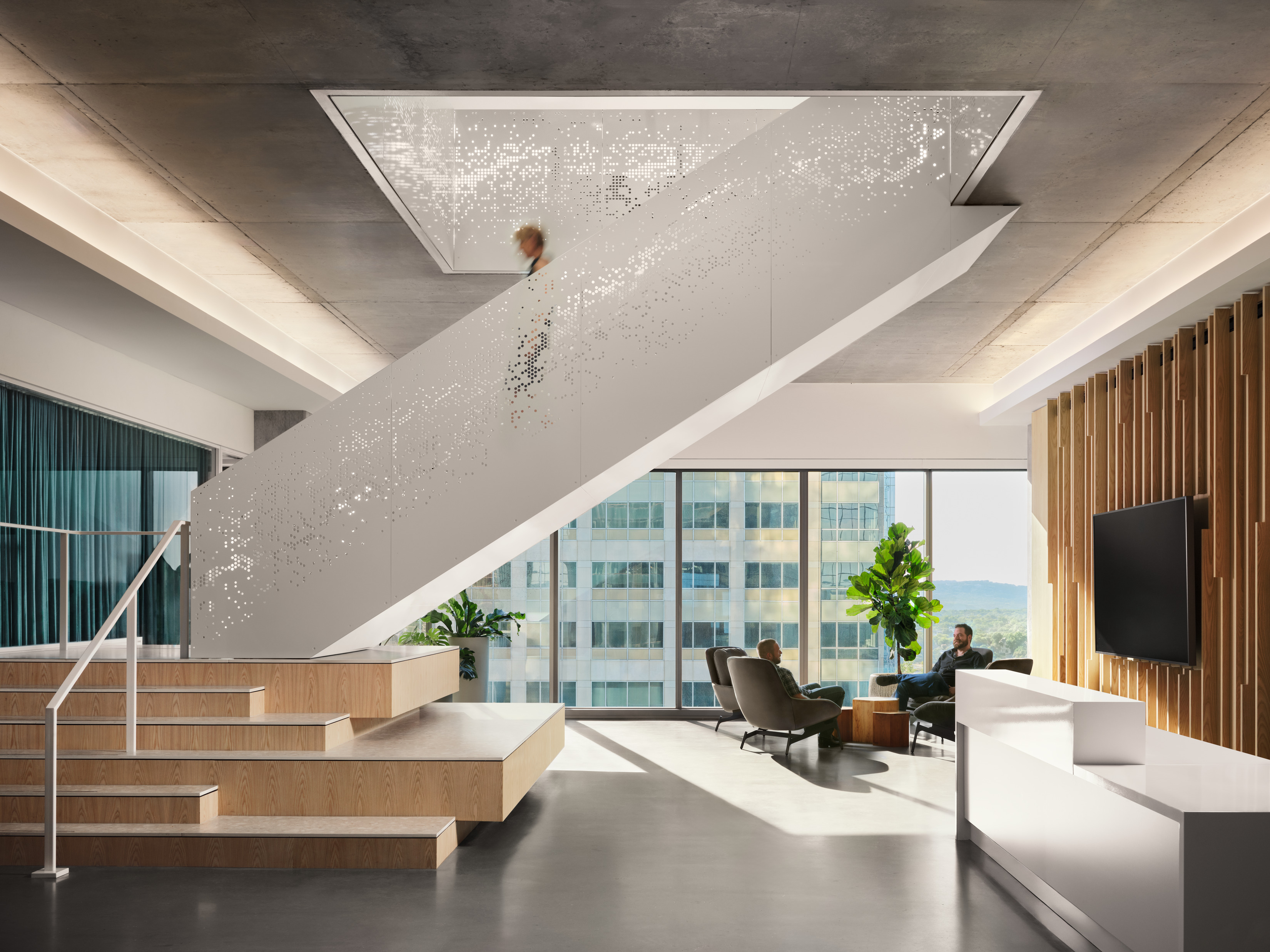
Most office environments suffer from an inadequate blend of natural and artificial light. Often, these spaces overlook the potential of natural light, relying instead on the meager rays that filter in through partially covered windows and doorways. Compounding this issue, the artificial lighting in many offices is dominated by the harsh, intense glare of bright white fluorescent bulbs, creating an uncomfortable and uninspiring atmosphere that stifles productivity and well-being. By neglecting the importance of thoughtfully designed lighting, many workplaces miss out on the opportunity to enhance their environment’s functionality and ambiance.
Over the past fifty years, a significant shift has occurred as workers have transitioned from outdoor occupations to the comforts of indoor office environments. However, this movement has increased exposure to the harsh realities of ultraviolet (UV) radiation emitted by fluorescent lighting. These lights emit short electromagnetic wavelengths that, when excessively absorbed by the eyes, can alter the structure of vital biomolecules, leading to serious damage to ocular tissues. Alarmingly, a study published in 2011 revealed that fluorescent lighting may elevate the risk of UV-related eye diseases by as much as 12%, resulting in an estimated 3,000 additional cases of cataracts each year in Australia alone.1 This pressing issue calls for greater awareness and action to safeguard our eye health in indoor settings.
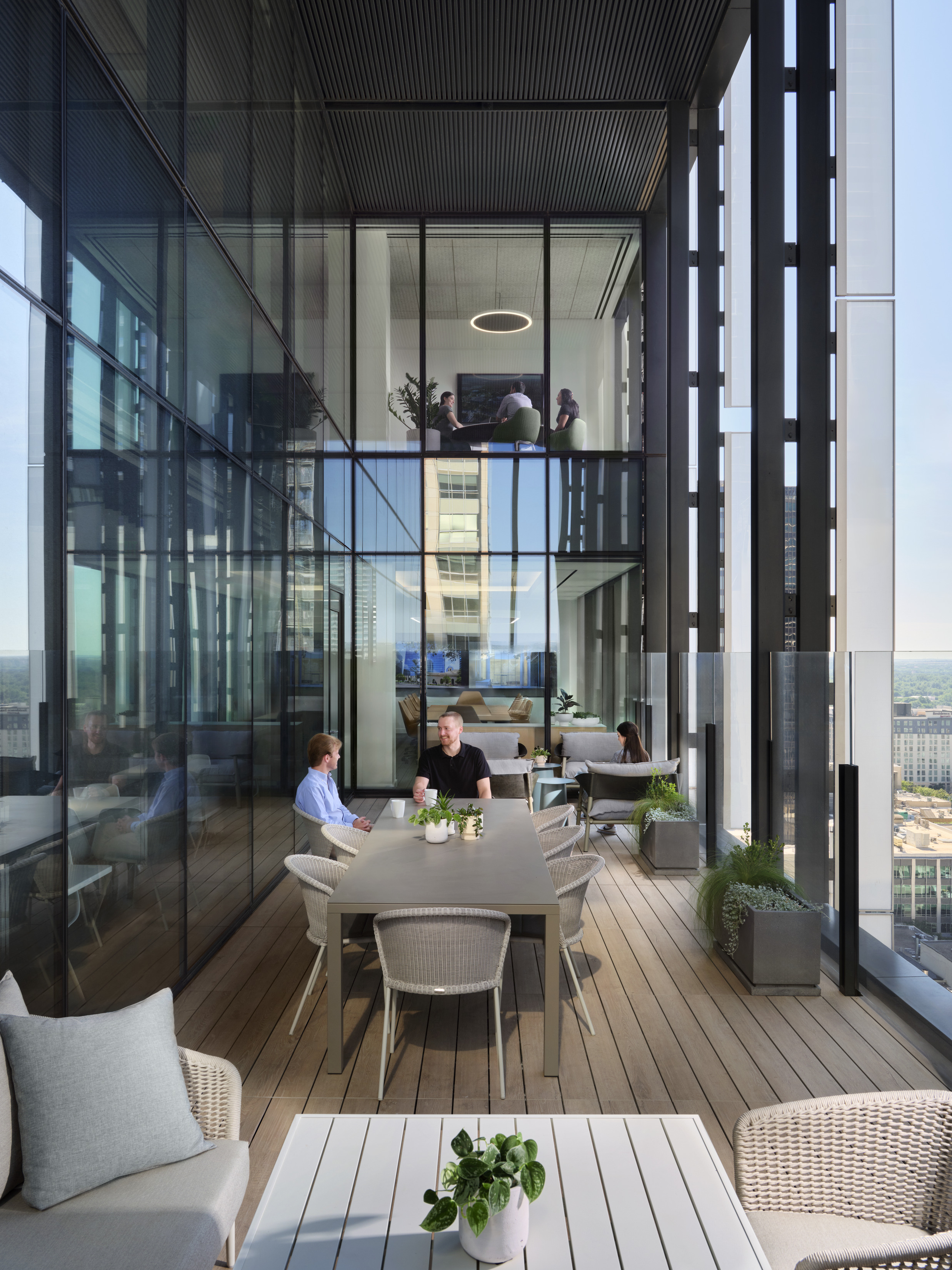
Natural light plays a crucial role in the office environment, directly influencing employee health while significantly enhancing mood and mental well-being. Research conducted in 2022 reveals that incorporating natural light into workplace settings boosts employee alertness, visual comfort, and overall job satisfaction.2 In contrast, inadequate lighting has been linked to numerous adverse health effects, including neurobehavioral and psychological issues.3 The benefits of natural light extend far beyond psychological improvements; they lead to tangible enhancements in physical health as well. The warm, diffused glow of natural light alleviates physical eye strain, ensuring sustained visual comfort for employees working long hours. Embracing natural light in the workplace is not just a design choice; it's an investment in the health and productivity of a workforce.
Natural light is an incredible asset that significantly impacts health and productivity in ways we may not fully appreciate. One of its most inspiring benefits is its ability to harmonize with our natural circadian rhythms, leading to a notable improvement in sleep quality. This enhanced sleep experience is directly connected to increased happiness and productivity among employees.
A groundbreaking study from 2014 revealed that individuals with access to windows and natural light not only engaged in more physical activities throughout their day but also enjoyed longer, rejuvenating sleep at night.4 In addition to its sleep-related benefits, natural light has been shown to alleviate anxiety and depression effectively.
Moreover, a 2021 study emphasized that sufficient exposure to fresh air and sunlight through thoughtfully placed windows is the most crucial design element for uplifting the mood and mental health of employees.5 In the same study, it was found that windows guaranteeing ample exposure to fresh air and sunlight were the single most important design feature that could make a difference in employees' mood and mental well-being. Embracing natural light in workplace design is not just an aesthetic decision; it is a vital investment in employee well-being and overall productivity that organizations should wholeheartedly embrace.
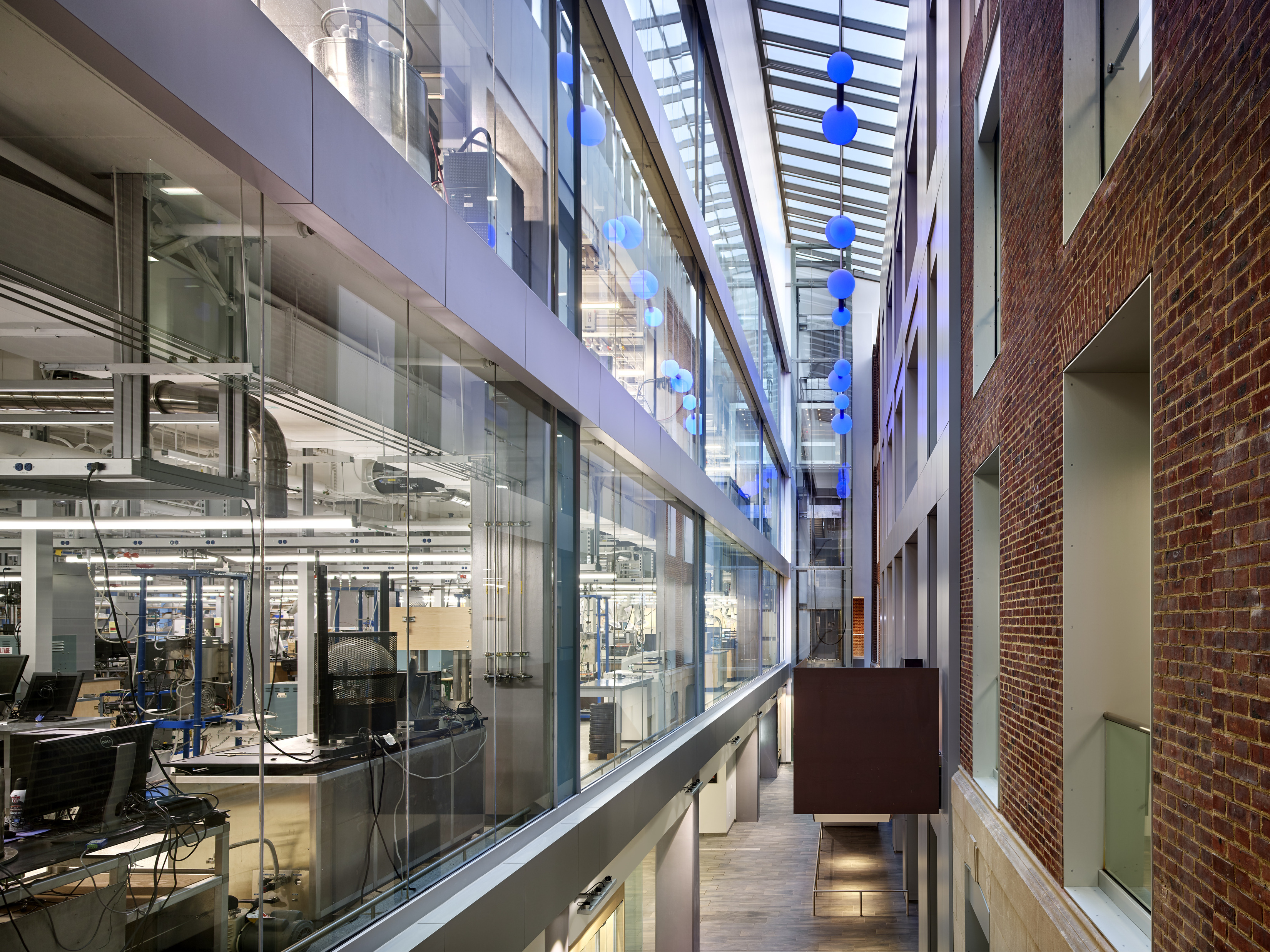
In addition to commercial offices, Page is dedicated to innovatively integrating natural light into many other design projects, exemplified by the striking Steidle Building at Pennsylvania State University in State College, Pennsylvania. A Charles Klauder design, this impressive 107,000-square-foot brick and glass structure is set on a busy university campus, where the challenges of updating a nearly 90-year-old building are met with creative solutions. To enhance the building’s light quality, Page designed a stunning four-story, 110-foot-long narrow glass atrium that penetrates the center of the building. The daylight-filled atrium acts as a radiant beacon, flooding the laboratories, offices, common areas, and stairwells with natural light. Its thoughtful design not only elevates the aesthetic appeal of the building but also creates a vibrant and uplifting environment for all who work and learn inside.
Daylighting was one of several factors impacting performance. The redesigned building, formerly U-shaped, underwent extensive analysis during the design phase. With a focus on aggressive energy conservation and LEED Silver Certification, the study found a 23% annual reduction in energy use compared to the ASHRAE 90.1-2007 baseline, an annual 24% cost reduction, 315-metric-ton decrease in CO2 emissions per year, and $185,501 in annual savings.
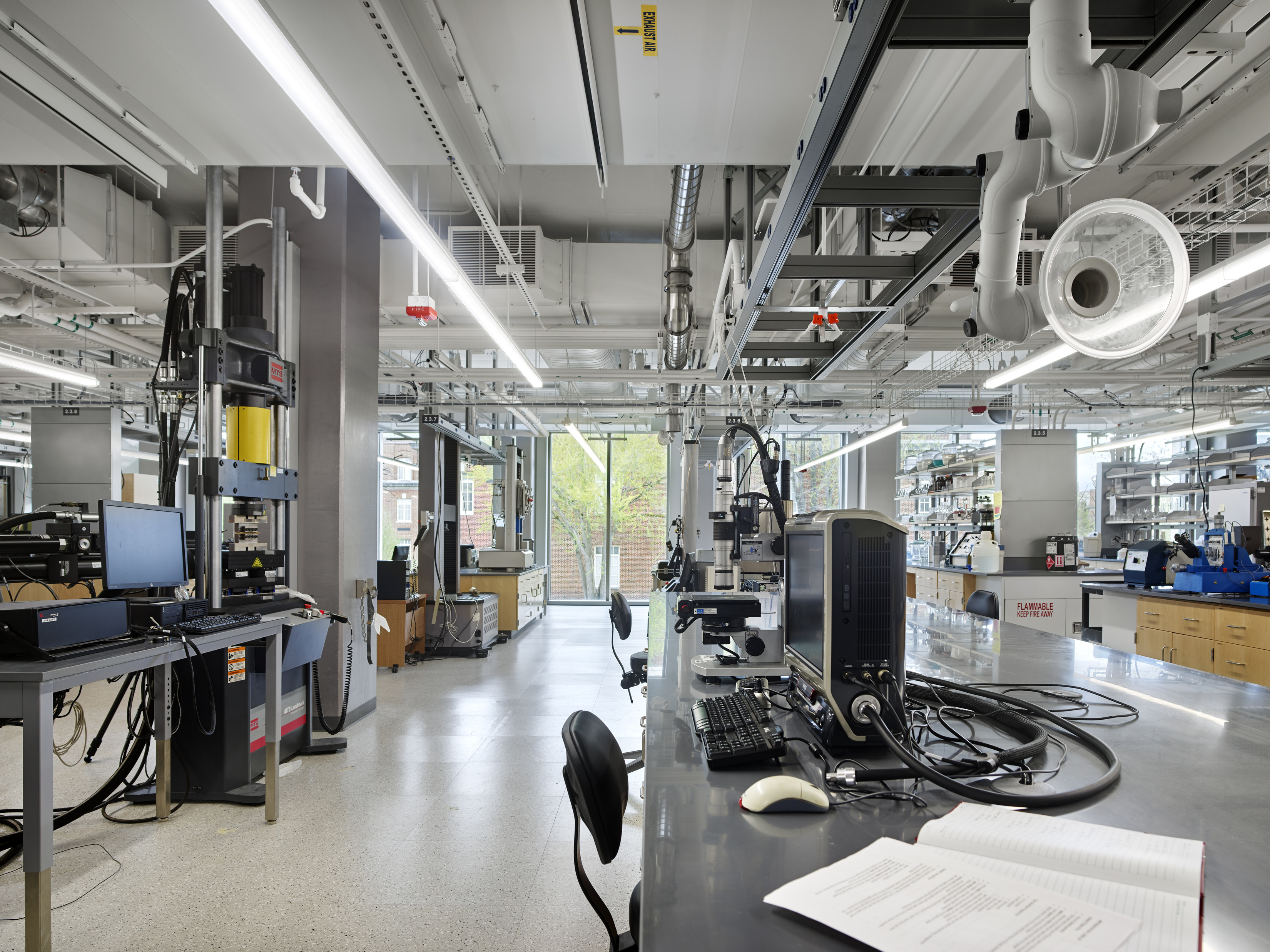
While some offices may encounter genuine obstacles in increasing natural light, such as inadequate or poorly positioned windows, virtually every office can swiftly and effectively introduce a rich array of plants and greenery to harness similar benefits. Biophilia, the innate human attraction to nature, is widely recognized by scientific and design communities as a means of improving well-being. By embracing this natural affinity, workplaces can create environments that nurture productivity and foster a sense of well-being.
Tyler Thompson, Page Architect, AIA, NCARB, LEED AP, says, “Biophilic elements can be as simple as introducing potted plants to horizontal surface areas. Additionally, ’living’ partitions can be used as room or area separations with as much or as little porosity as desired to balance privacy and biophilic elements.”
Research shows that humans inherently respond to greenery in powerful ways. Engaging with plants activates the parasympathetic system, triggering a calming neural response that helps to relax the body. This increase in relaxation can effectively counteract the heightened stress and “fight-or-flight” instincts associated with the sympathetic system. Although biophilia particularly thrives in harmony with natural light, creating a compelling synergy that amplifies the advantages of both, its benefits are significant on their own. Incorporating biophilic design into office environments can lead to profound positive outcomes for workers, enhancing their well-being and productivity.
Numerous studies have unveiled the remarkable advantages of engaging with nature. Just a stroll through the forest can lower stress hormones by as much as 15%, decrease pulse rates by 6%, and enhance feelings of relaxation by a staggering 56%.6 These are truly transformative benefits. Incorporating plants and greenery into office environments harnesses the concept of biophilia, providing similar positive effects, albeit on a smaller scale. The impact of these enhancements is significant, directly influencing factors such as absenteeism, employee retention, mental well-being, and fatigue—all of which can critically affect job performance.
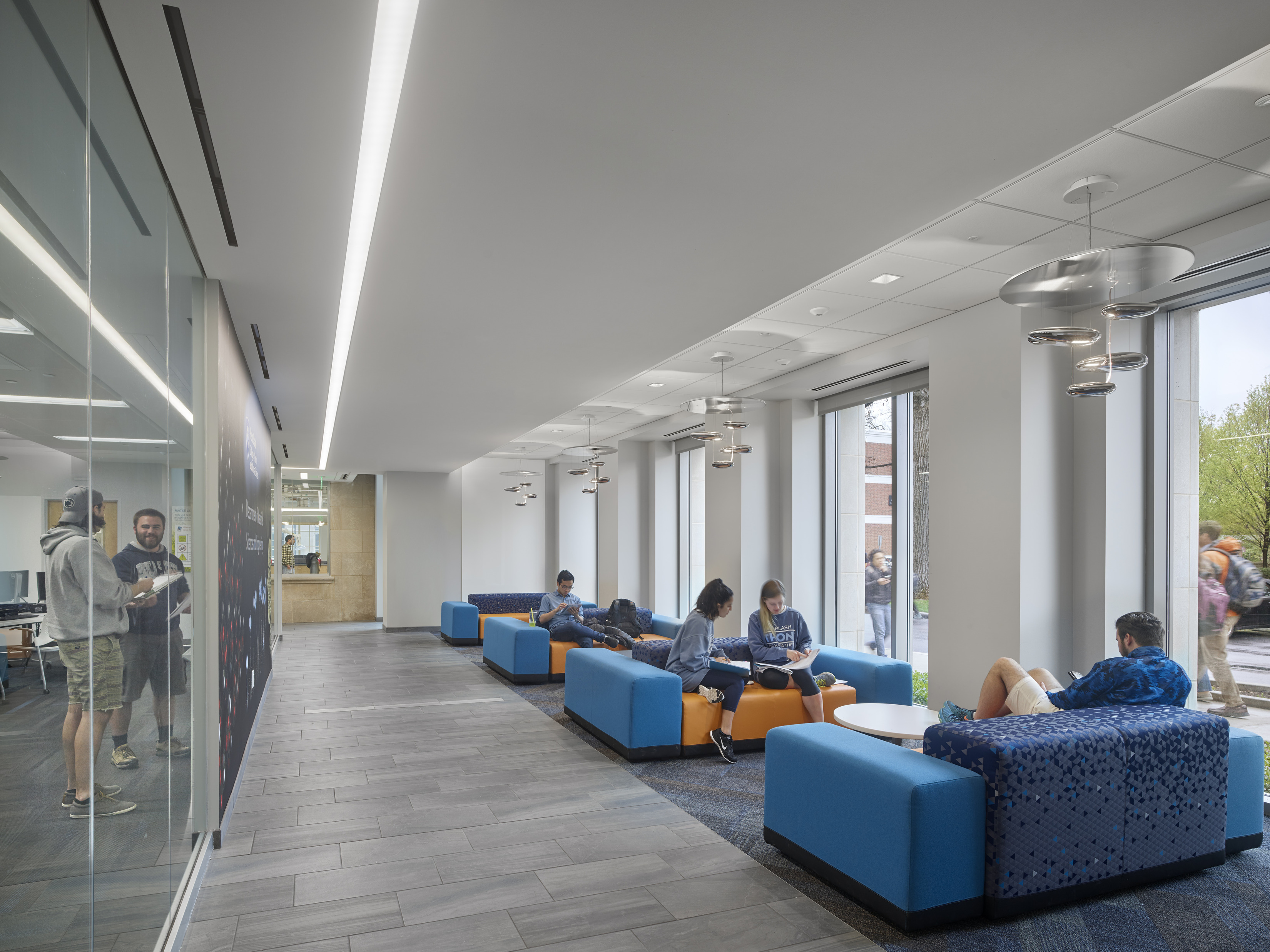
A groundbreaking study conducted at the University of Oregon in 2011 revealed that employees who have access to views of plants, trees, and natural landscapes enjoy remarkable health benefits. They take an average of 11 fewer sick leave hours each year than their counterparts without such views.7 The presence of greenery not only fosters well-being but also combats presenteeism, where employees are physically present but mentally disengaged.
The positive impact of biophilia in the workplace goes well beyond these performance metrics. Research indicates that the economic benefits can reach an astonishing $1,000 per employee each year.6 Clearly, investing in natural elements within work environments is a strategy for enhancing productivity and a proven pathway to improved employee health and satisfaction.
Harnessing the power of natural light and biophilia can lead to profound and measurable benefits in the workplace. Exposure to natural light not only alleviates eye strain but also enhances mental well-being, fostering a more vibrant and productive environment. Meanwhile, incorporating biophilic elements infuses spaces with a sense of tranquility, effectively reducing stress levels. While the optimal integration of these design principles occurs during the initial planning or redesign of office spaces, there are impactful strategies that office managers can implement right away. Simple adjustments, such as positioning desks near windows, designating well-lit areas as employee workspaces, and introducing a variety of potted plants throughout the office, can substantially elevate the overall atmosphere and well-being of the team. Investing in these changes is not just a design choice; it's a commitment to creating a healthier, more engaging workplace.
References:
1. Walls HL, Walls KL, Benke G. Eye disease resulting from increased use of fluorescent lighting as a climate change mitigation strategy. Am J Public Health. 2011;101(12):2222-5. Available at: https://pmc.ncbi.nlm.nih.gov/articles/PMC3222423/
2. Rasouli Kahaki Z, Jahangiri H, Smith AP, Kazemi R. Subjective and objective survey of office lighting: effects on alertness, comfort, satisfaction, and safety. Med Lav. 2022;113(3):e2022024.Available at: https://pmc.ncbi.nlm.nih.gov/articles/PMC9437655/#:~:text=Results%3A,comfort%2C%20satisfaction%20and%20worker's%20preference.
3. Agarwal, Pragya. (December 31, 2018.) How Does Lighting Affect Mental Health In The Workplace. Forbes. Available at: https://www.forbes.com/sites/pragyaagarwaleurope/2018/12/31/how-does-lighting-affect-mental-health-in-the-workplace/
4. Boubekri M, Cheung IN, Reid KJ, Wang CH, Zee PC. Impact of windows and daylight exposure on overall health and sleep quality of office workers: a case-control pilot study. J Clin Sleep Med. 2014;10(6):603-11. Available at: https://pmc.ncbi.nlm.nih.gov/articles/PMC4031400/
5. An M., Colarelli S.M., O’Brien K., Boyajian M.E. Why we need more nature at work: effects of natural elements and sunlight on employee mental health and work attitudes. PLOS One. 2016;11:e0155614. Available at: https://journals.plos.org/plosone/article?id=10.1371/journal.pone.0155614&utm_medium=organic&utm_source=blog&utm_campaign=benefits-of-sunlight
6. The Economics of Biophilia. Terrapin Bright Green. (2014.) Available at: https://www.terrapinbrightgreen.com/reports/the-economics-of-biophilia/
7. Elzeyadi, I. (2011). Daylighting-bias and biophilia: quantifying the impacts of daylighting on occupants health. Greenbuild 2011 Proceedings. Washington, DC: USGBC Press.

